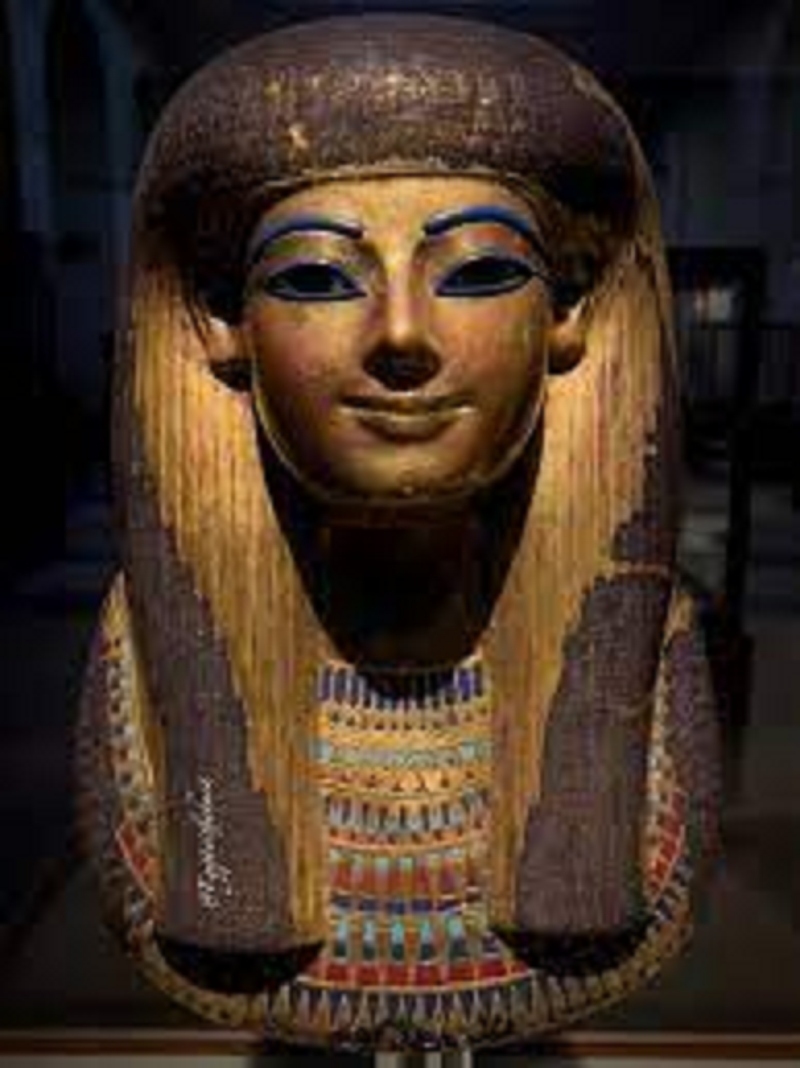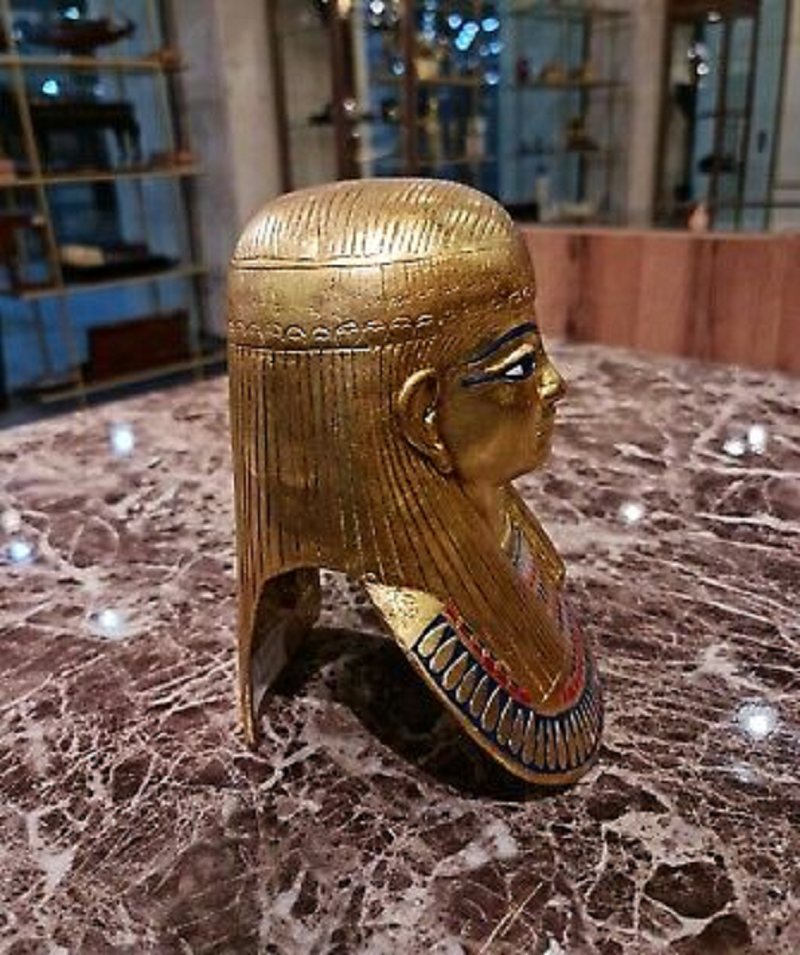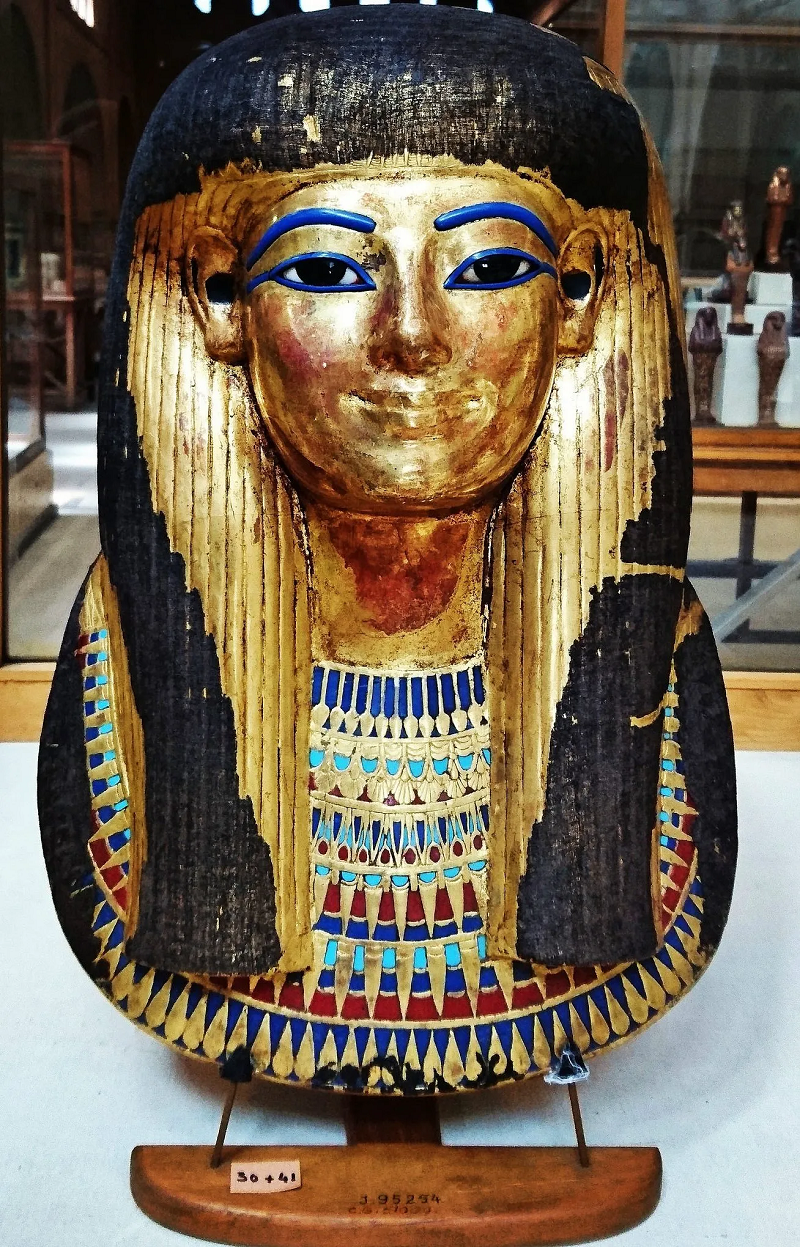In the vast expanse of Egypt’s Valley of the Kings lies a treasure trove of ancient artifacts, each whispering tales of a civilization long gone. Among these relics, the Mask of Thuya stands as a testament to the artistry and reverence of the New Kingdom’s late 18th Dynasty, circa 1391-1353 BC. Discovered within the confines of the Tomb of Yuya and Thuya (KV46), this remarkable artifact now resides in the hallowed halls of the Egyptian Museum in Cairo, captivating all who behold its splendor.

Crafted from cartonnage and adorned with a delicate layer of gold foil, the Mask of Thuya is a masterpiece of ancient craftsmanship. When unearthed, it lay shrouded in the remnants of its linen covering, a cocoon of history waiting to be unraveled. Despite the passage of millennia, fragments of the shroud cling to the mask, serving as poignant reminders of the veil that once concealed the face of its noble wearer.

Thuya, depicted with an ethereal beauty, gazes out from the mask with eyes that seem to transcend time itself. Her visage, framed by a three-part wig, exudes an aura of serenity and dignity. The wig, intricately styled and meticulously preserved, leaves the ears exposed, a subtle nod to the human beneath the divine facade. Atop her brow rests a diadem adorned with floral motifs, with a lotus flower delicately positioned above her forehead—a symbol of rebirth and regeneration, echoing the eternal cycle of life and death.

But who was Thuya, the enigmatic figure immortalized by this exquisite mask? Born during a period of great political and cultural upheaval, Thuya lived in a time when Egypt stood at the zenith of its power. As the wife of Yuya, a powerful courtier and nobleman, she held sway in the inner circles of Egyptian society, her influence extending far beyond the confines of her earthly existence. Through her descendants, including her illustrious granddaughter, Queen Tiye—the Great Royal Wife of Pharaoh Amenhotep III—Thuya’s legacy endured, leaving an indelible mark on the annals of history.

The significance of the Mask of Thuya extends beyond its aesthetic allure; it serves as a tangible link to the religious beliefs and funerary practices of ancient Egypt. In a civilization obsessed with the afterlife, death was not viewed as the end, but rather as a transition to the next realm of existence. Masks such as these were not mere adornments; they were conduits through which the soul of the deceased could traverse the perilous journey to the underworld, guided by the watchful eyes of the gods.
As archaeologists continue to delve into the mysteries of the past, the Mask of Thuya remains a focal point of study and contemplation. Through meticulous examination and analysis, researchers hope to glean insights into the social, religious, and artistic conventions of ancient Egypt. Each crack and imperfection tells a story, offering tantalizing glimpses into a bygone era and the lives of those who walked the hallowed halls of the pharaohs.

Conclusion
In the annals of history, the Mask of Thuya stands as a testament to the enduring legacy of ancient Egypt—a civilization whose achievements continue to captivate and inspire. As we marvel at its beauty and craftsmanship, let us also reflect on the profound mysteries it represents. For in the enigmatic gaze of Thuya lies the essence of a civilization that defies the passage of time—a civilization whose secrets we are only beginning to uncover. And so, as we stand on the threshold of discovery, let us heed the silent call of the past, ever beckoning us to unravel its mysteries and unlock the secrets of our shared human heritage.


